The Mysteries of Self-Initiation
One of history’s most capricious salonnières proves how deeply her streak of independence was embedded in her personality. Welcome to the salon…
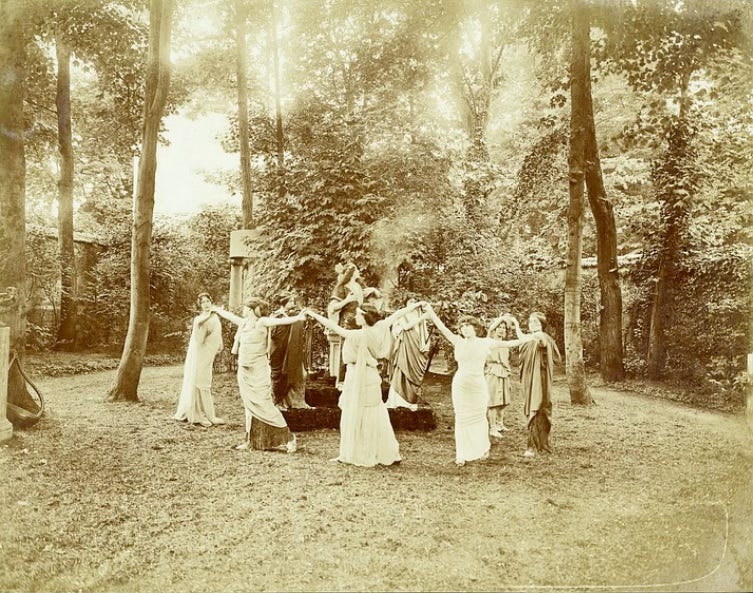
This is one of three salon explorations featuring Natalie Clifford Barney: click through to the first one to start at the beginning.
Some critics have come to believe that Natalie Clifford Barney’s writing suffered because of the prominent social role she held in the Parisian artistic community. These intellectuals debunk the biographies and memoirs that claim Natalie’s lesbianism is the crucial factor in her life because they see her place at the center of a group of women committed to producing serious literature and art as more important. (1) The female companions who revolved around Natalie did advance experimental forms of both but it is impossible to ignore what an unconventional group they were, which comes into focus when she lived on the outskirts of Paris. Before she earned her reputation as a literary lioness, the fascination she inspired in her early acolytes had more to do with theater than with literature. She was so enamored with performance art, she declared it was a religion.
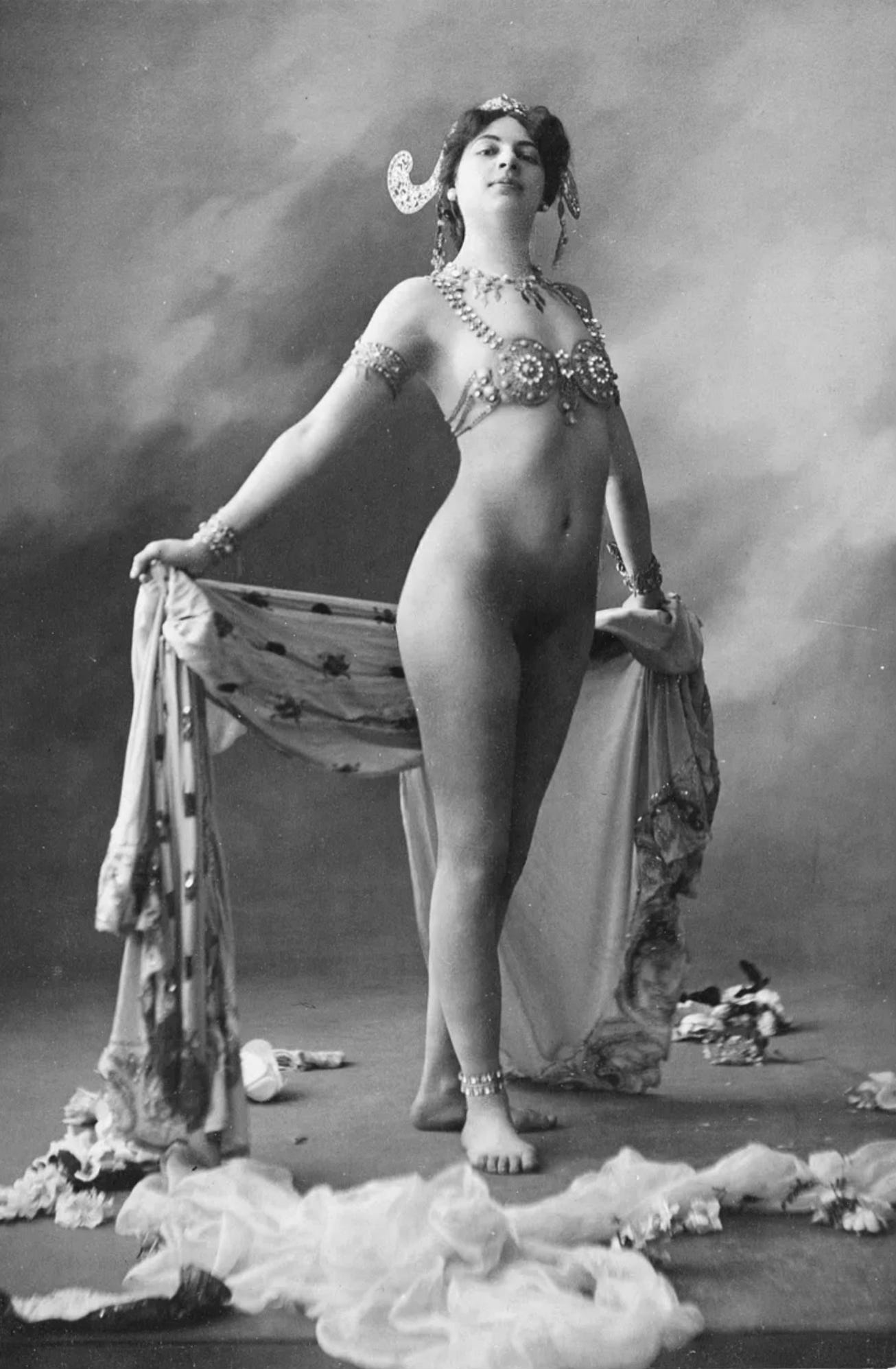
Before she moved to the Left Bank where we found her during the last salon exploration, the twenty-year-old rented a home in Neuilly-sur-Seine, and became famous for staging her own plays and tableaux vivants in the garden. These resulted in her eviction from the property less than a year after she moved in because her landlord read an article in Comoedia about nude women cavorting in her shady garden in the spirit of Bilitis and Sappho. (2) In one such production, Colette described the scene when a naked Mata Hari, wearing only turquoise jewelry and a tinsel crown atop her loose black hair, rode a horse bareback onto the lawn. Murmurs erupted when the exotic dancer exited the bushes and they saw the long thigh against the white flank of the Arab stallion. (3) The sans-clothing frolicking was such a regular occurrence, it is said the neighbors breathed a sigh of relief when Natalie was forced out, though there must have been a voyeur or two among them who were sad to see her go!

She chose this home and the one on the Left Bank because they provided her with easy access to the Bois de Boulogne where she could gallop on horseback to her heart’s content. Neuilly was situated near the north end of the park and rue Jacob was not far from its southern tip. There are a number of images of her dressed in riding habits with bowler hats capping her curls and riding crops held confidently in both hands. Elizabeth Eyre de Lanux, a fellow expat who also lived at 20 rue Jacob, described the intensity that came with being on the scene once Natalie had relocated to the Left Bank, “I found myself or rather lost myself like an invisible fish in exotic waters. The famous and beautiful women sat in file against the wall…perhaps a certain ferocity lay underneath their exoticism.” De Lanux also described a number of parties she attended, including a masked ball in Natalie’s garden where a small Doric temple stood, the words “Temple à l’Amitié” [Temple Consecrated to Friendship or Love] carved into the frieze on the entablature. (4)
Natalie saw this inscription as the perfect representation of her ability to maintain platonic relationships with her friends—some of whom had never been her lovers and a number of whom remained confidants after their affairs with her had ended. (5) The collection of eccentrics was internationally famous and many a society seeker from other countries wanted to witness the salon’s habitués at least once because the gossip they would be able to share when they returned home was akin to having tracked down a prized souvenir. (6) Many of the women they would have found there come to life still as they gaze from the portraits that Romaine Brooks painted of them. One of Natalie’s closest confidants with whom she had a protracted love affair, Brooks depicted a number of the privileged women, the painter herself included, in the male dress they preferred. They seemed so aloof, I wondered if this had more to say about Brooks than her subjects, as she was extremely paranoid and hypochondriacal by the time she was painting them. (7)
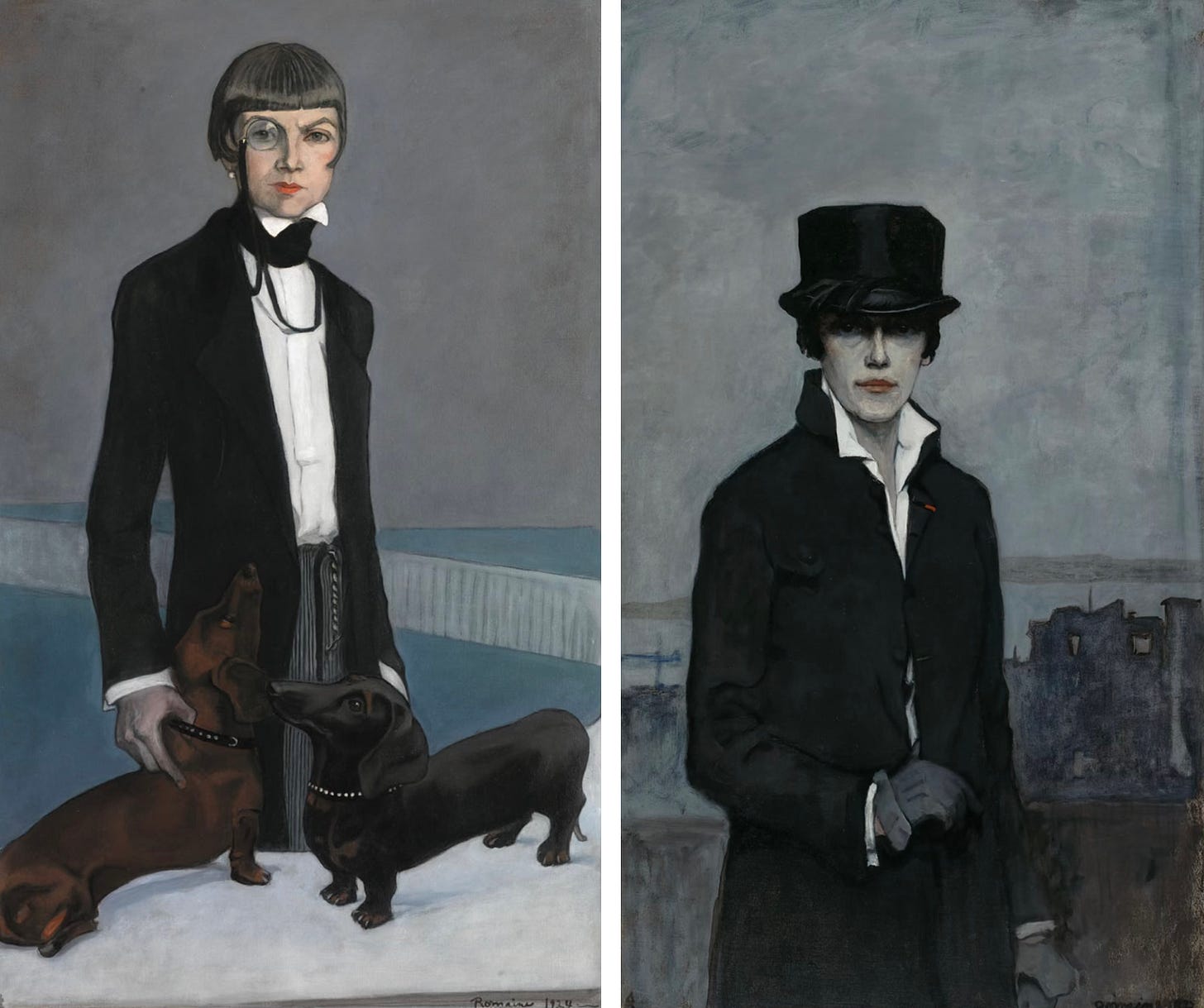
Natalie thought her friends’ predilections for dressing in masculine clothes was ridiculous because it projected the message that homosexual women were really men trapped in women’s bodies. (8) Natalie chose to dress in ladylike attire instead, and though a fair amount of risqué behavior circulated around her, she was more concerned about her avowed freedom to be herself. “If life is to be the expression, and not the suppression, of self, have I not roundly fulfilled and succeeded in mine?” she asked. “What’s more, does it not require deep concentration to catch hold of the messages of our interior being, and thus experience the mysteries of self-initiation?” (9)
At times, she was remarkably obstinate. “I love my life,” she declared. “Principally because I have been able to keep it free, in order to freely give it. Guided by love—the kind which forces us to surpass ourselves—I have loved my fellow man, and particularly my fellow woman, with passion. That such feelings and dispositions may be seen as blameworthy or too intense, has never bothered me.” (10) She then boasted, “Living in the eye of love is an adventure for which few are suited. It’s a very trying environment; most of those who attempt it are in danger of burning up with fever or of starvation. Few constitutions survive. As for me, the striving, the pain and the mystery are more than just my native land. It is only there that I feel I am in my element. My life is truly my own, without pretense, and so, consequently, is my work: my writing is simply the accompaniment.” (11)
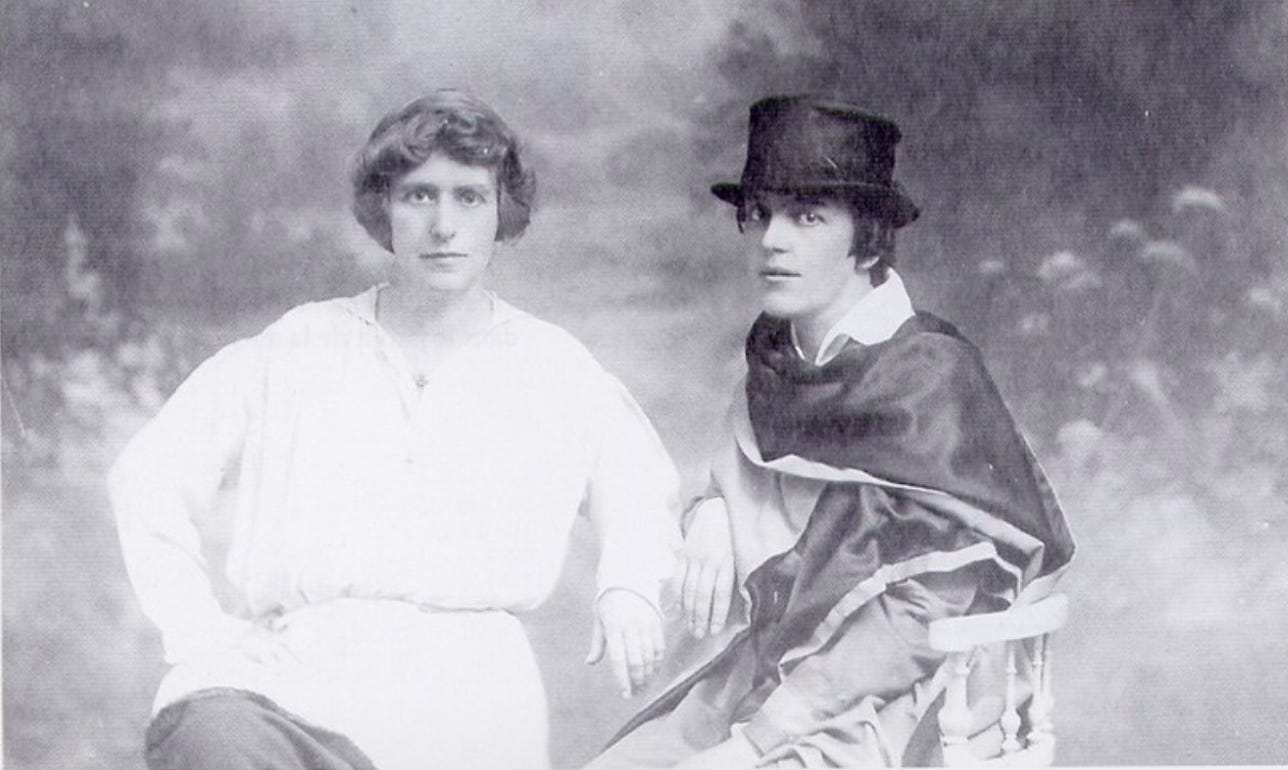
About her unfaithfulness, she wrote, “My love affairs? Many. My friendships? Loyal and faithful.” (12) I believe she could so easily move from lover to lover without guilt because her commitment to freedom was stronger than it could have been for any one person. The smugness of her epigrams in A Perilous Advantage: The Best of Natalie Clifford Barney highlight her sense of self-importance, as is the case when she asked, “Might I be the one I am looking for?” (13) Attitudes like this exasperated her lovers, and though she charmed more than she offended, a number of the rejected girlfriends and other contemporaries presented Natalie in an unflattering light. Antoinette Gabrielle Mortier de Faucamberge, who wrote under the pseudonym Aurel, ended a published portrait of Natalie that appeared in the newspaper Le Monde Nouveau in 1925, with, “No, Natalie doesn’t bring anything ‘new’ because that is not the kind of life she advises. And the new exists only in the direction of life. She brings a visage amused with dying; she brings a form bewitched by shipwreck.” (14)
In an interesting move that illustrates how Natalie never shied away from criticism, she published Aurel’s entire profile in her book of essays Adventures of the Mind. Natalie could also dish it out as forcefully as she was dished about. Her narrative titled “When Poets Meet” recounts an event she remembered when Sylvia Beach and Adrienne Monnier hosted Edith Sitwell at the Shakespeare & Company bookstore. Sitwell had agreed to present a lecture on the work of Gertrude Stein, who was also in attendance. Instead of following the program, Sitwell decided to read from her own book and Natalie said not one person in the audience dared return Sitwell’s smile as she recited her poetry because Stein’s expression was “forbidding.” She then shared the atmosphere after a select few of the attendees had moved upstairs to Beach’s apartment in which the bookstore owner was hosting an intimate supper. (15)
“The glass of sherry I proffered Edith Sitwell made her question: ‘Won’t it go to my head?’” Natalie wrote. “I smilingly reassured her and refrained from murmuring, ‘No spirits but Miss Sitwell’s own could accomplish that!’” When Natalie turned to hand a glass to Stein, whom she had seen behind her as she approached Sitwell, she was told the offended woman had abruptly left. (16) Juicy tidbits like this litter the narratives penned by Natalie and her habitués, some of the most interesting ones highlighting how they loved to dis the conformists who happened onto the scene. To learn about how her salon developed, click through to my last post. In my next exploration, I answer the question, “Why was Natalie referred to as The Amazon?”
Today’s salon question: Do you think there is energy created in certain places at certain times that heightens the possibility of artistic freedom, as was the case in Paris during the 1920s and 1930s?
A version of this piece was published in my book Lives Illuminated. You’ll find it, The Modern Salonnière, and my other books on my Amazon author page. Print versions from Bookshop.org are linked here. You’ll also find a number of them on Kindle. To see the sources for the footnotes, click through to my footnotes page.


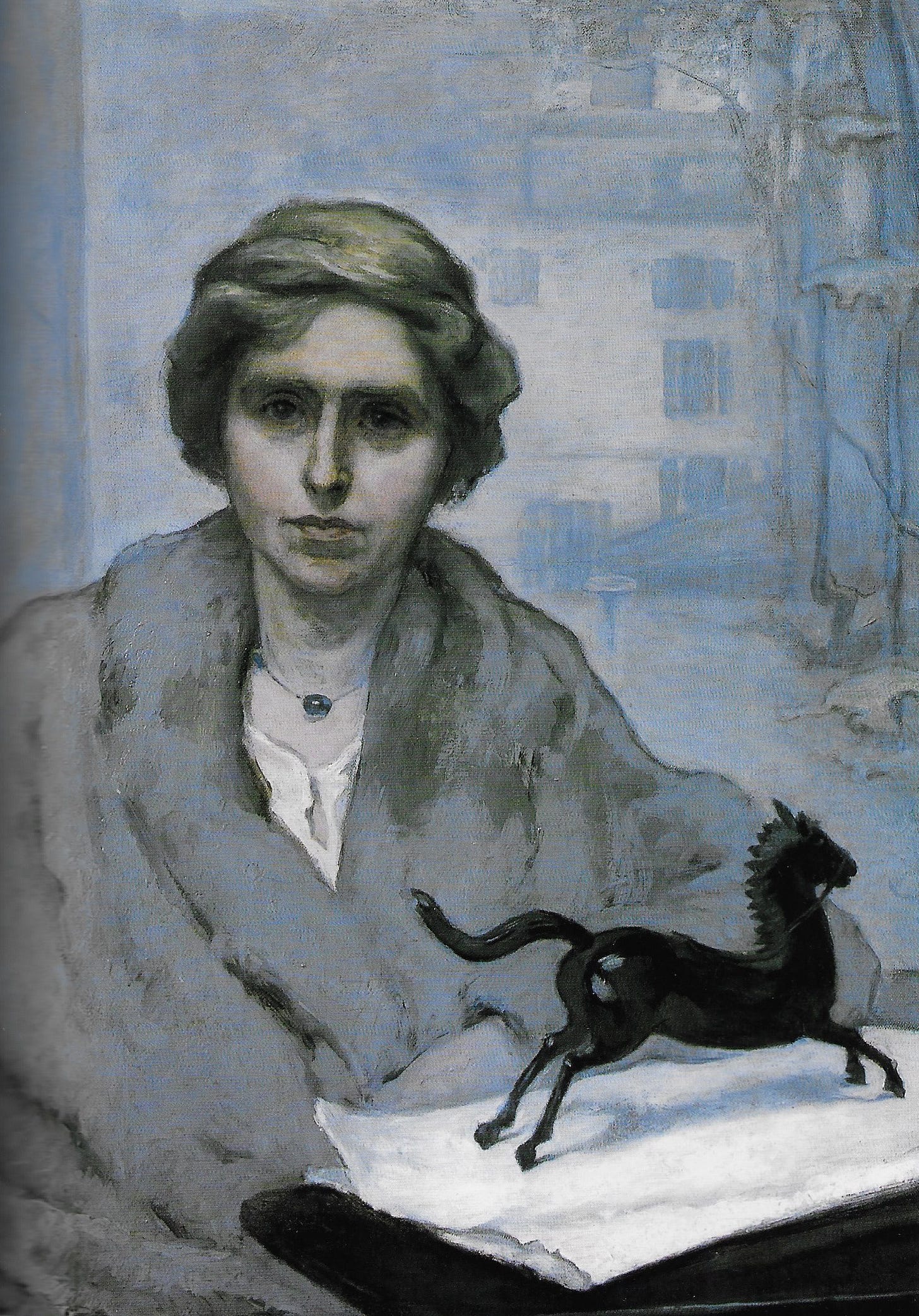
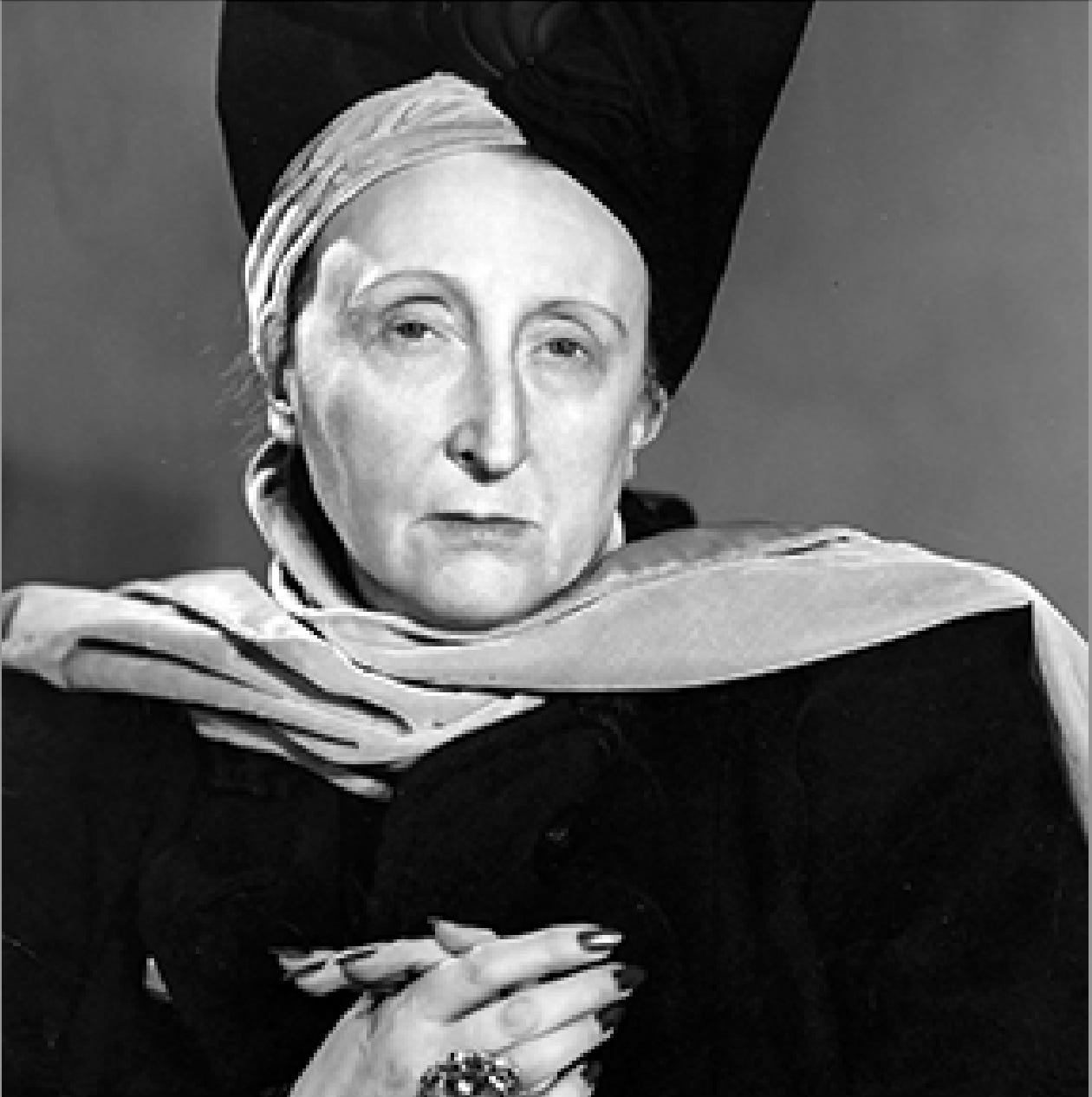

Thank you for this piece. I find your question interesting. I suppose my answer is—yes!
In the case of Sapho 1900, I suspect that the energy or machine propelling that particular flourishing of the arts was a combination of efforts. Liane de Pougy was the Angelina Jolie of 1899, the world’s most famous courtesan at the time, a huge celebrity, and her book Idylle Sapphique was a best seller. It was all about popularizing (not scandalising) sexual transgression and cultural difference. That fueled the fire around Mata Hari. At the same time yes there some amazing chanteuses were doing similar innovative things in music. And of course the other great machine (predating the Ballets Russes of Diaghelev) was the phenomenon of Sarah Bernhardt in the theatre… and the posters and graphic design of Alphonse Mucha, rendering Bernhardt, another female pioneer who performed in men’s clothing, larger than life. I mean Mucha literally gave the City of Light its iconic graphic feel, starting with the Metro sign…
Paris during those years was the world business capital as well, much as New York became during the flourishing of the arts in the 30s and 40s … billions were being transferred onto the continent via the dollar princess marriages, and it all happened in Paris.
But I think probably celebrity is one of the things, in any era, that concentrates circles of people and makes way for a flourishing of the arts?
Curious as to what others think !
Once again thank you…